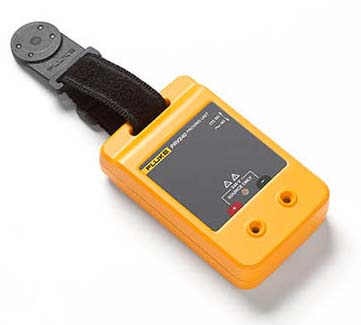Unverified voltmeters can be deadly
Many electrical workers have created dangerous arc flashes, or have been shocked, even electrocuted, because the voltmeter they were using was broken and gave an incorrect reading. In some cases, the electrician turned the meter to the wrong setting or installed the test leads improperly when the meter was applied to the circuit, it indicated an absence of voltage even though the circuit was still energized.
This is why NFPA 70e® Article 120.1(5) requires that the meter be verified as working properly prior to, and after, testing conductors or circuit parts that are thought to be de-energized. This is accomplished by plugging the meter in to a known live source such as a 120-volt outlet.
Live-dead-live (L-D-L) testing

Click to open PDF: Electrical Testing Safety Part 1: Preparing for Absence of Voltage Testing
If the meter does not indicate the expected voltage from the known source, we know there is a problem with the meter. This process is commonly referred to as a live-dead-live test. For a complete explanation of the process, read Fluke’s application note Electrical Testing Safety Part 1: Preparing for Absence of Voltage Testing, written by one of my favorite electrical safety authors, Jim White.
For nearly 10 years now, I have worked in the nuclear industry. Anyone who knows anything about nuclear will tell you that we have lots and lots of rules and we must follow them without fail. This is an absolute when protecting the health and safety of the public. So, we follow the live-dead-live rule each time we deenergize a circuit that our electrical craftsmen will work on.
In some parts of the plant it can be hard to find a 120-volt outlet or other live source to verify that the meter is working properly. Understand that we want to spend as little time as possible in some places because we are receiving a dose of radiation. We don’t want to waste a lot of time searching around for something to test the meter on. Therefore, we equip our crews with L-D-L testers, which can also be called a proving unit. This is a handy little tool that fits very nicely into an electrician’s tool bag. It runs on batteries and has an output of A.C. and D.C. voltages (usually between 50 and 240 volts depending on the brand.) The electrician pulls it out of the bag, tests his meter prior to and after the absence of voltage test, he is on his way quickly and safely.
Use simple methods to ensure safety from electrical safety hazards
Having performed electrical work in industrial facilities for most of my adult life, I understand that rules that make things complicated and/or time consuming tend to be overlooked. Especially if you’re in a production environment where equipment downtime needs to be kept to a minimum. Workers may feel time pressure and simply skip the live-dead-live test. By giving them this simple tool, very little, if any, time is added to the job scope. This makes this rule less objectionable, consequently the de-energization process will get done efficiently and correctly, keeping employees safe every time.

Sign up for our free weekly Safety Tips and receive one weekly, right to your inbox!







